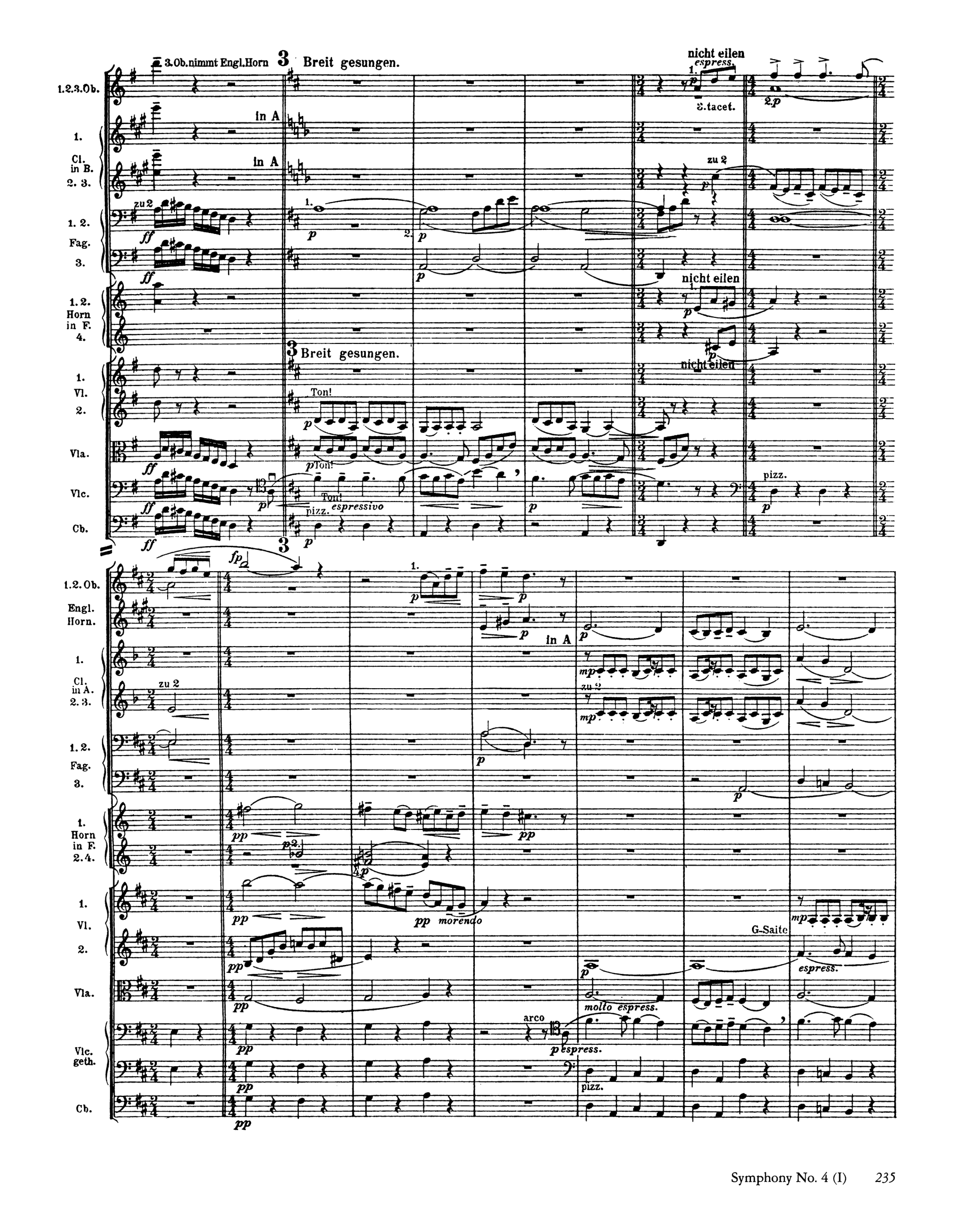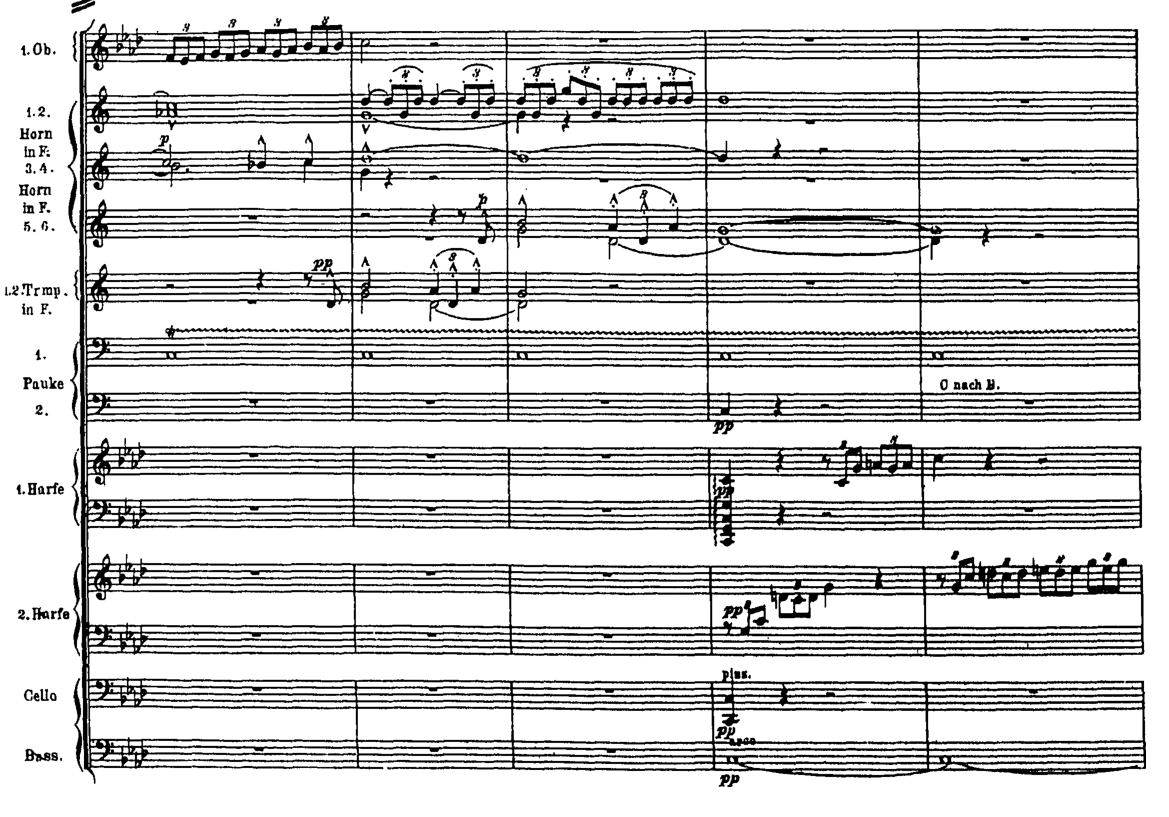Tchaikovsky | Symphony No. 4 | Ex. 11
Learn About Orchestration | Cahiers d’orchestration | L'équilibre et le contraste | Examples
Tchaikovsky | Symphony No. 4 | Ex. 11
Exemple 11 : Recréation de l'effet proche - lointain
Example 11: Recreating the near-far effect
Figure 11. P. Tchaïkovski, 4ème symphonie, 1er mouvement, mm.193-201. © Dover Publications, 1998
Ex.11: 9:00
Score following video
A dramatic peak achieved by contrasting two sections of the orchestra
Extremely rapid shifts in contrast
Increase in the frequency of contrasts
Clean transitions with no overlap between consecutive scenes
Overlapping sequence
Various types of sequencing
Sequencing through a cross-faded and blended transition
The color remains balanced. Only the spatial quality is contrasted.
Balance of tension between two different instruments.
Dramatic dynamic contrast achieved through the recurring use of a single musical motif
Recreating the near-far effect
Parallel construction of a crescendo and an echo effect
Spatial sweep across the string sections, traversing all the music stands. Panning effect.
Achieving contrast solely through spatial means while maintaining balance in all other musical parameters.
Alternation between woodwinds and strings in spectral balance on the same chord
Spectral contrast between strings and woodwinds
Example of antiphony in a polychoral work from the Renaissance.
Antiphonic structure created by the alternation between winds and strings. 3rd mov., mm. 99-112
Responsorial structure created by the contrast between two instrumental densities.
Contrast between two instrumental densities: 2 string sections and a solo bassoon.
Contrast through the textural treatment of a melodic line.
Inverse relationship between polyphonic density and instrumental density.
Extreme contrast of orchestral registers
Extreme contrast between the 2nd thematic group in the exposition and the recapitulation of a sonata form
























